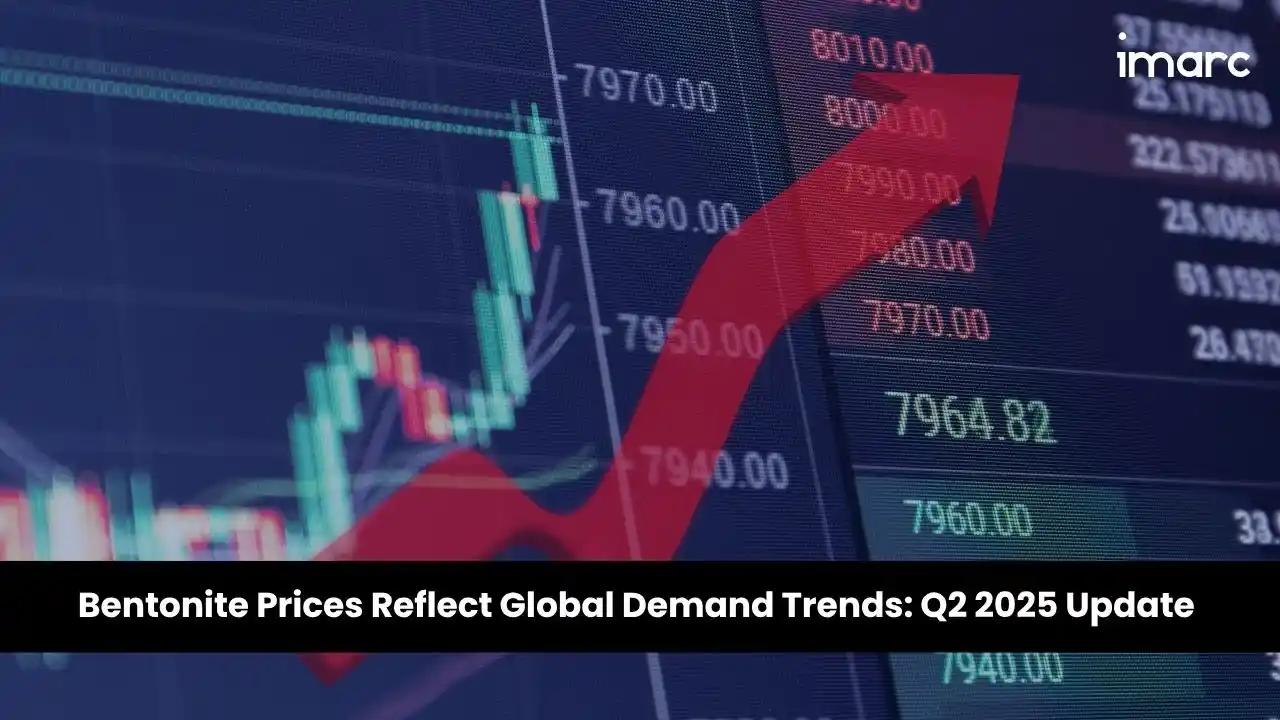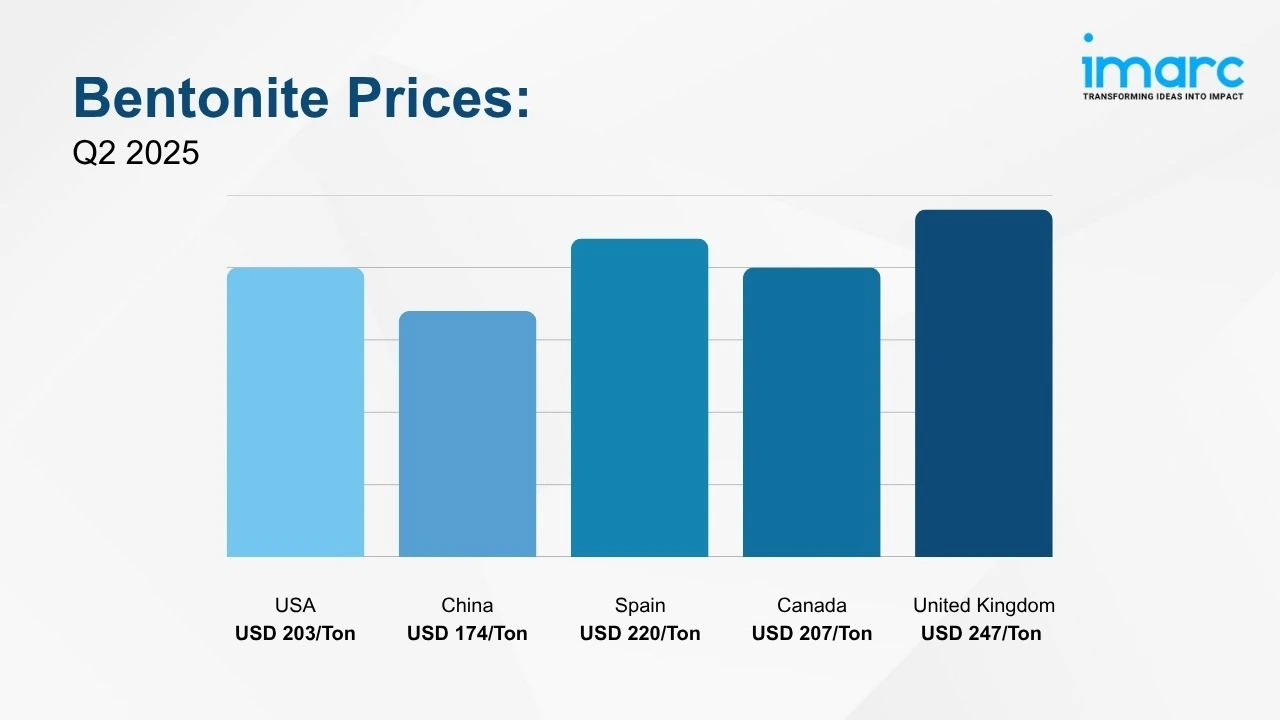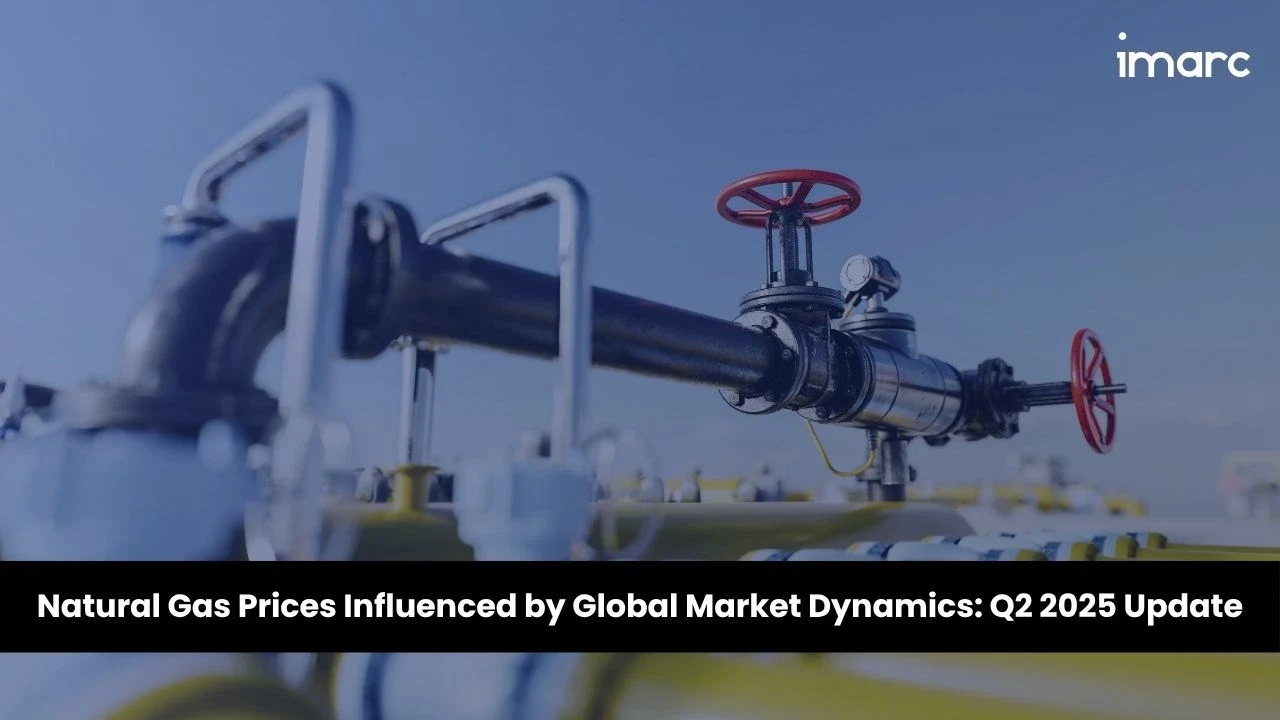Bentonite Prices Reflect Global Demand Trends: Q2 2025 Update
16-Jul-2025
Amid active exploration in the energy sector and sustained demand across construction and foundry industries, the global bentonite market is experiencing firm pricing levels, according to IMARC Group’s latest publication, Bentonite Price Trend, Index and Forecast Data Report 2025 Edition. The report provides updated insights for Q2 2025, emphasizing the way price shifts are being shaped by regional industrial activity, environmental regulations, and evolving trade dynamics. Key markets, such as North America, Asia Pacific, and Europe remain central to this trend, with price movements reflecting both logistical factors and sectoral growth.
Q2 2025 Bentonite Prices:
- USA: USD 203/Ton
- China: USD 174/Ton
- Spain: USD 220/Ton
- Canada: USD 207/Ton
- United Kingdom: USD 247/Ton

To Access real-time prices, Request Sample
The current bentonite prices highlight the material’s critical role in drilling, metal casting, and civil engineering applications, with consistent industrial consumption and supply chain adjustments contributing to a stable to rising global price trajectory.
Key Regional Price Trends and Market Drivers:
United States
In Q2 2025, bentonite prices in the United States reached USD 203/Ton by June. The increase was supported by higher export volumes to key Asian markets such as Japan and Chinese Taipei, while import volumes declined significantly. Continued demand from the oil and gas sector, along with ongoing infrastructure development, contributed to steady market conditions and stable pricing.
China
Bentonite prices in China stood at USD 174/Ton in June 2025. During Q2 2025, the country's energy and construction sectors showed strong performance, driving demand for bentonite in applications such as drilling fluids, cement additives, and foundry sand. Supply remained tight amid regulatory measures and localized weather disruptions, maintaining firm pricing.
Spain
As of June 2025, bentonite prices in Spain reached USD 220/Ton, reflecting a firm market during Q2. This was fueled by steady consumption across sectors including agriculture, oil and gas, and the construction industry. Elevated input costs and increased production expenses also contributed to upward pricing trends across the region.
Canada
In Q2 2025, the Canadian bentonite market recorded a price of USD 207/Ton. Higher exploration activity in the energy sector and evolving environmental regulations affected supply chain dynamics. This, along with consistent demand from drilling and civil engineering projects, kept prices elevated throughout the quarter.
United Kingdom
Bentonite prices in the United Kingdom rose to USD 247/Ton in June 2025, the highest among key markets during Q2. The price increase was influenced by varying regional supply conditions, stringent environmental policies, and strong demand from the construction and industrial sectors. Limited domestic supply and rising compliance costs further contributed to firm pricing.
Bentonite Industry Overview:
The global bentonite market reached a value of USD 2.1 Billion in 2024 and is projected to grow to USD 3.4 Billion by 2033, expanding at a CAGR of 5.60% from 2025 to 2033. Bentonite's versatility across industries such as oil and gas, construction, and environmental remediation supports its widespread adoption, especially for use in drilling fluids, landfill liners, and slurry walls.
Key drivers include the expansion of shale gas projects, increased investments in infrastructure, and growing environmental regulations promoting the use of sealing and containment materials. Its continued application in green sand casting and tunneling projects further reinforces global demand.
Recent Market Trends and Industry Analysis:
Bentonite continues to play a vital role in oilfield drilling operations, offering thixotropic and filtration control properties crucial to performance in complex boreholes. Its binding strength and thermal resistance make it essential in the production of foundry molds, especially as demand grows for precision casting in automotive and industrial equipment.
In civil engineering and environmental projects, bentonite is widely used for groundwater barriers, waste containment, and geotechnical sealing. The rising focus on sustainable infrastructure and safe waste disposal practices is driving its use in both developed and emerging markets, with regulatory support boosting industry momentum.
Strategic Forecasting and Analysis:
IMARC’s report incorporates forecasting models that project near-term price movements based on evolving trade policies, raw material supply, and technological trends. These tools enable businesses to mitigate risk, enhance sourcing strategies, and support long-term planning.
Key Features of the Report:
- Price Charts and Historical Data
- FOB and CIF Spot Pricing
- Regional Demand-Supply Assessments
- Port-Level Price Analysis
- Sector-Specific Demand and Supply Insights
_11zon.webp)





.webp)




.webp)












